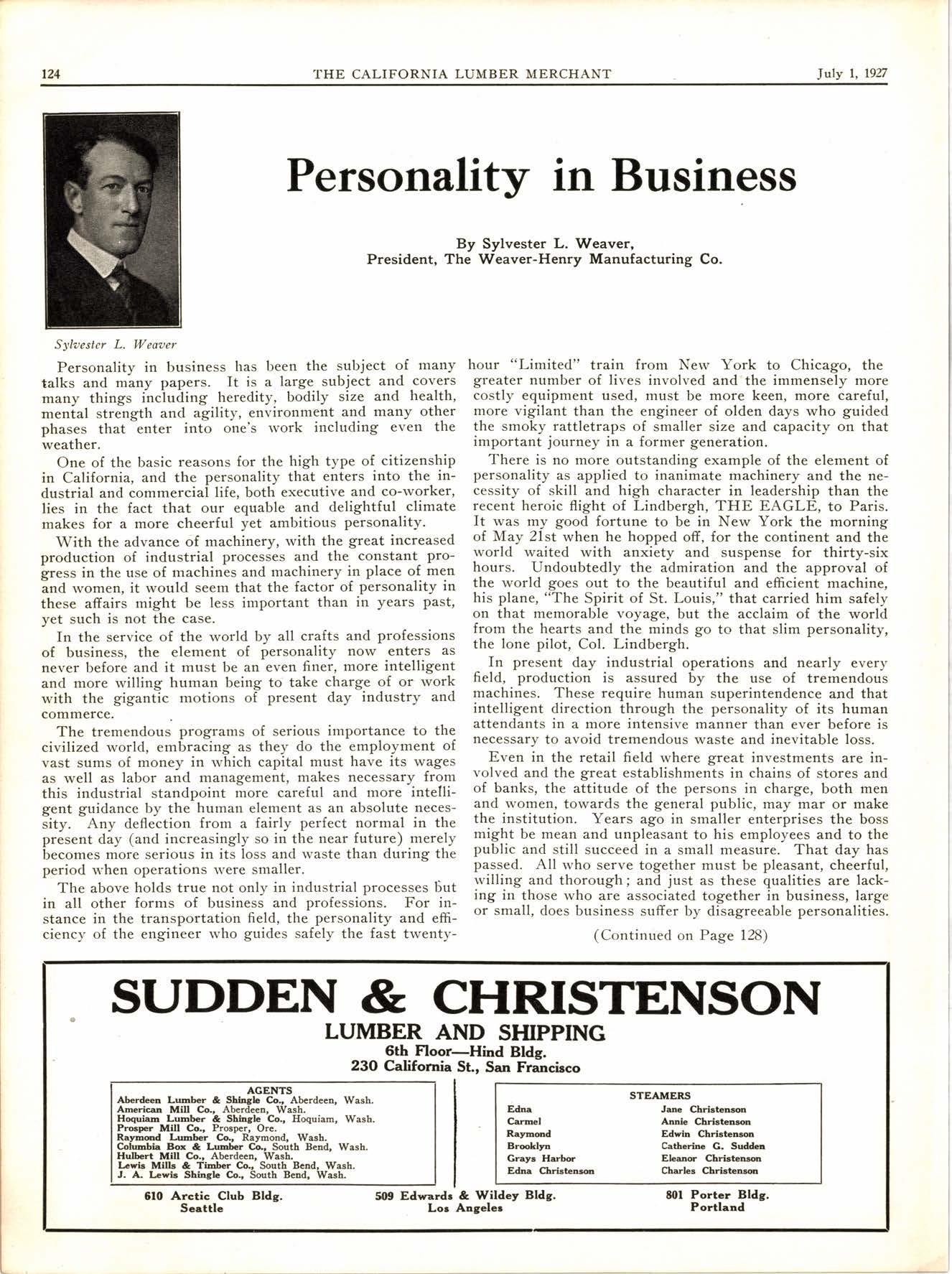
3 minute read
HARDWOOD LUMBER FLOORING PANELS
(Contisued from Page 45) fore, they will not, in my judgment, be provided. After a sufficient period of profitable operation, undoubtedly there will bc considerable expansion in production, but before that time elapses, the production of Southern Pine will have so greatly declined that all the additional production will be necessary. The second step in this study is to see whether or not the consolidation would provide any more revenue through increased values and reduction in costs. The question led us to make a study to see how much more we could secure for Fir lumber than we are now securing. We naturally concluded that as Fir lumber during the year 1923 was sold for $7.55 lesser differential than in 1926 as against Southern Pine, that what had been done could be done again. We came to the conclusion that if the lurnber was dried and properly prepared for the market, and shipped by rail, savings of 15% per cent in freight rates could be made, and that we could recover $10.55 without affecting competition with substitutes. If lumber was standardized to the American standards of sizes, vr'ater rates would be reduced l0 per cent. Second, we made a complete study of grade production from the logs in the South and those in the West, with the result that we came to the conclusion, after allowing for the differential of $7.02 in freight rates and an average of $3.00 lower price, $10.07 could be recovered due to the larger production of higher grade lumber with the logs in the West. We then undertook to find out the prices at which our lumber was being sold to the public by the retailers, as compared with Sbuthern Pine. Very much to our surprise, we found the Fir lurnber with the limited exception of timbers and flooring in some sections, was sold at identically the same prices, grade for grade, and item for item, as Pine to the consumer. We also found that the trade generally preferred Fir to Pine, because the natural qualities caused it to be more merchantable than Pine. A general investigation with the trade developed the fact that Fir lumber was being purchased by the retail dealer for $11.00 to $23.00 per thousand feet less than Pine delivered. In other words, the retail distributors are making all of the profit in the Fir business. Consequently, we concluded that the prices for our product coutd be increased as aforesaid without raising the cost to the consumer.
Generally speaking, the thought is prevalent that most of. the Fir lumber moves by water, and yet in 1926 the sales reported by the Davis Exchange in Portland, arnounting to 2,122,964,000 feet, showed the following distribution:
Total . .....100.00%
Most of the lumber, whether moved by rail or water, is sold through jobbers and brokers, who have no interest in the lumber, except the brokerage they can make. At least 85% of the product is sold in this manner. There is an indirect cost of selling the product in this manner which amounts to from 5% to 7%. We have found instances where large manufacturers on this Coast were declining to sell their product to the railway cornpanies who were discounting their bills, because of the time it took before they could get their money, and they preferred to sell to the jobbers, paying them their commission, as well as 2% tor cash, notwithstanding they would have secured their money from the railway companies in two to three weeks. Our own experience shows an average of only 39 days for outstanding accounts.
ln our investigations we found that the industry is not overcapitalized, but is under-financed. An investigation of 24 s-elgcte-d cornpanies showed that their total capital assets were $143,50O,000, wittr $23,708,000 funded obligations and $15,340,000 current obligations. These courpanies generally had the timber on their books at the March l, 1913, value, or cost, if acquired subsequent- to M,arch 1, 1913. There was easily $200,000,000 of value in their assets instead of the book value of $143,500,000. These companies, on the basis of the reasonable property value, owed only l8l7o of their capital assets, which would seem to p9- 3- -v-er-y sound situation. But their current assets v/ere only $18,382'000; while their current liabilities, $15,340,000, leaving only $3,042,000 of net working capital. In other words, they are in the position where they must force their product on the market to meet payrolls and other current expenses.
In the first eight months ol 1926 these companies shippe-d 1,285,000,000 feet of lumber, on which their gross profit was $5,487,000 before depreciation, depletion, and Federal income taxes or interest. The plints were on their books at a cost of $1.80 per thousand, and iheir interest was $1.24 per thousand, and their total conversion, $4.27 per thousand, so that they had $1.23 per thousand for
(Continued on Page 48)
Pitcher Stiding Door Frames And Hangers
Doors
Manufactured by
Frmes shipped miled up complete, ready to *t in tmitim ln wall. Quutity muufacture enablec u! to $ve Eoney for the bulHer c ontractc.










